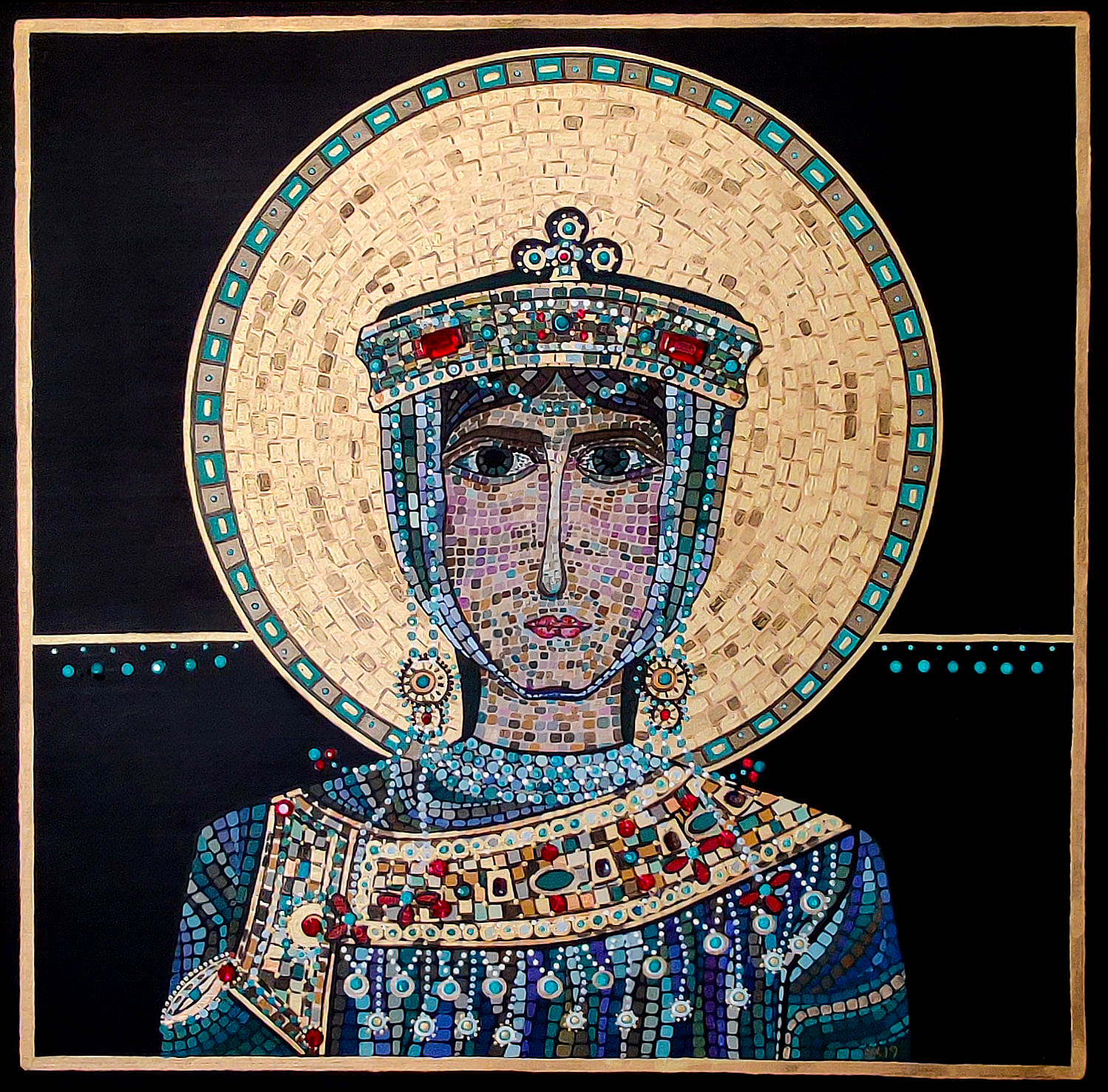- Year 2019
- Media Wooden panel, acrylic paint, golden gilding paint, golden metallic paint
- Dimensions 50 x 50 cm
- Availability This painting is available for purchase. Price on request. Please don't hesitate to contact me.
- View more GALLERY
Saint Eudokia
“A WOMAN FROM THE EASTERN HOLY LANDS. SAINT EUDOCIA” is also part of the “De Personeae” (Personalities) cycle aiming to arrive at my own interpretation of images of personalities representing various cultures and symbolic ideas.
I saw her depicted in the form of a mosaic on the exterior of the St Alexander Nevsky Cathedral in Sofia, Bulgaria. It was her strong presence and willful gaze that drew me to discover who Elia Lycinia Eudocia was.
Her biography recounts that she was born in Athens or Antioch (modern day Antakya, Turkey) around 400 AD and was named Athenais. Her father was the sophist philosopher Leontius who taught his daughter literature, rhetoric and philosophy. She later became empress after converting to Christianity and marrying the Byzantine emperor Theodosius II (r. 408–450 AD) in Constantinople. Thus, she became known as Elia Lycinia Eudocia (“the benevolent will of God”).
Eudocia used her power in court to protect and aid pagans and Jews. Her latter part of her life, after her withdrawal from Constantinople, was devoted to literature. Her most famous piece of writing were her Homeric centos (verses) or “Homeric stitchings”. They were a form of poetry comprised of fragments taken from the Iliad and Odyssey and “stitched” together with stories from the Bible. Unfortunately, very little of her literary work has survived which explains why it has not become so popular.
I chose to interpret her image in painting because of her admiration, search and collection of knowledge.
The period between 395 AD and 476 AD into which Eudocia was born and lived describes an important transitional period in the history of social, political, and religious life. One of the most interesting aspects of change in this era was the phenomenon of the female ruler “basileía”, the officially sanctioned partnership of women in imperial power. Beginning with Flaccila (c. 355-386), empress and wife of Theodosius I, is a line of imperial women who wielded public power in a way that the Roman world had never before seen. Eudocia was considered as one of the most appealing of these women because of her intelligence and dignity. In support of this is Eudocia’s influence over Theodosius II in taking the decision to found a university in Constantinople in 425 AD which competed with the traditional schools of classical education already existing in Antioch, Alexandria, and Athens. Teaching in it was focused on combining Christian learning with classical disciplines such as grammar, rhetoric, philosophy, and jurisprudence.
As an empress Eudocia set out on a pilgrimage to Jerusalem from where she brought back a number of relics. For her contribution to the Eastern Orthodox Church, she was acknowledged as saint whose holiday is celebrated on 13th August.
